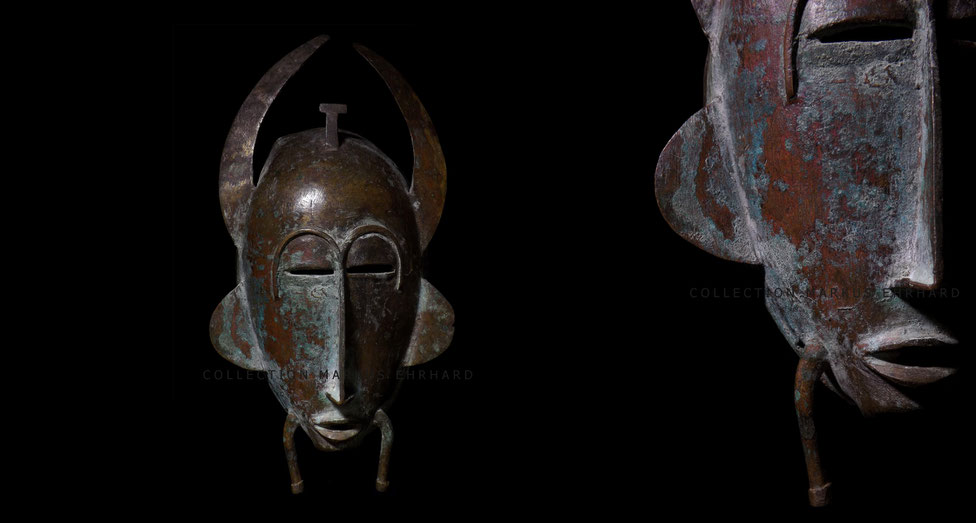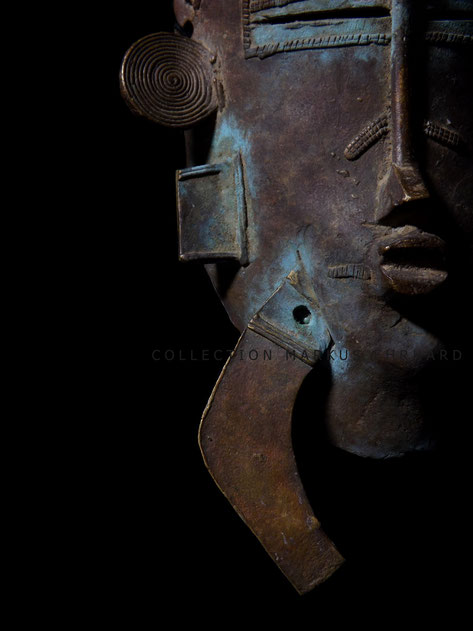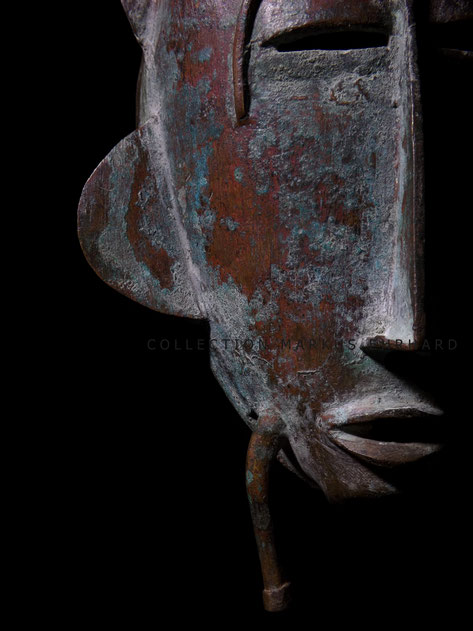
Today I will start a new blog series dealing with false Kpelié masks. As a collector specialized in these masks made by the Senufo, I came along a lot of faked masks in the past. Starting collecting I bought some objects, I would most certainly not buy today. I will not name the galerists, who sold me some masks as authentic pieces from an old French collection, where the previous owner will not be named, because of discretion (Hands off these objects and don't listen to these stories!).
In all my three my books I describe the difference between an authentic piece with real traces of usage, Airport-art, a copy and faked objects. You have a copy, when a mask with typical elements of the Senufo style is made by an other tribe, like the Lobi, Dogon or Baule, or even in China. Vice versa, Senufo carvers can copy their styles in an object...but no chinoisery. In this case I talk about a copy, because the originator is from a different cultural and regional background. I compare this also with the copied Louis Vuitton bags or Rolex watches made in China: Copied objects made by someone else, just to make money with a lookalike. And no, it is not a compliment, when your object get copied and you as the originator get harmed and financially damaged.
In case a Koulé (Senufo carver that works with wood) or a Fono (Senufo smither that works with wood) makes a mask with traditional elements of his culture to make his living by selling it, we talk about Airport-art (read my blog article about Ziehouo Coulibaly).
Sometimes it is said, that a for example a Senufo statue shows influence of the neighbouring Bambara or Dogon. Also, hands of these objects. These sculptures are pure phantasy, made to look nice and interesting.
But I want to talk about, in this and follwing articles, about fake. Objects that got manipulated to look like a certain style with signs and traces of usage. These faked masks could be made by a Senufo, but also by other tribes or origins.
The mask above was sold to me as an authentic piece, luckily I did not pay a lot. At first view this pure mask looks like an authentic style, no chi-chi or confusing decorations. The shape is a bit unregular, but the cast is thin and well done, the surface is even. As jewelry designer I know some techniques to change colour of metal, like setting silver into vintage style. Therefore I use chemicals, like Noirit or other alcaline lyes or acids, to change the surface and structure of metal. In case of the shown mask the surface got treated persumibly with nitrit acid, HNO3 Acidum nitricum. Obviously you can see a placed greenish fake patina, in shape of running drops at the left decoration element. To see the difference, below I compare an authentic mask, casted by Gobé Koné (+1951), Fono from Gbon, around 1930. The turquoise patina looks like dusted or powdered on places where damp and wetness is collecting. In this case it is natural verdigris, which is not to imitate.

Kpelié mask, casted by Gobé Koné, Fono from Gbon. +1951. Time of creation around 1930. Collected by Karl-Heinz Krieg.
24,0 x 12,5 x 4,0 cm, bronze alloy.
Literature:
- Wenn Brauch Gebrauch beeinflusst, Markus Ehrhard, page 128 - 129, 146.

Faked Kpelié mask.
30,0 x 14,5 x 6,5 cm, bronze alloy.
Literature:
- Wenn Brauch Gebrauch beeinflusst, Markus Ehrhard, page 147.
Copyright content and images by Markus Ehrhard

